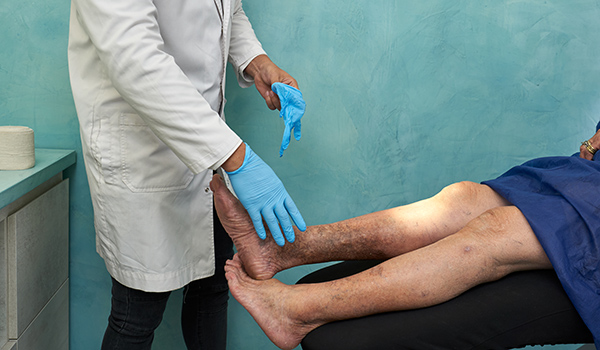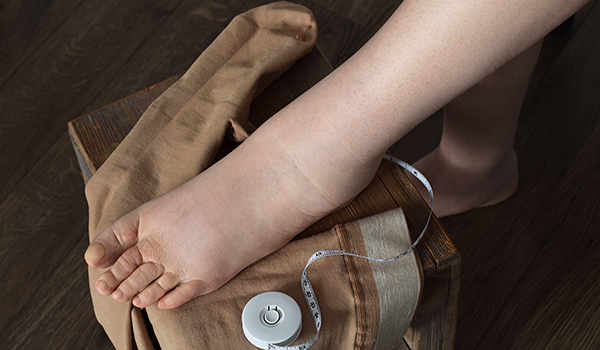Diabetic Foot Conditions

PODIATRY SOLUTIONS
How Podiatry techniques can help with diabetic foot?
Diabetes is a long-term condition that impacts the entire body. Poor management can lead to serious complications, including severe infections that may require multiple amputations. Regular consultations with a podiatrist are crucial for diabetic patients to safeguard the health of their lower legs and prevent potential foot and leg issues that could result in amputation.
Standard off-the-shelf foot orthotics are not suitable for diabetic feet without prior assessment or prescription. Diabetic orthotics are specifically designed to support the unique and changing foot structure of diabetic patients. These orthotics must precisely contour to the foot, promoting normal function and preventing high-pressure areas that can lead to diabetic wounds.
Walking subjects the foot to pressure and shearing forces. For diabetics, using any foot intervention carries risks; improper devices can worsen issues. Dispensing diabetic orthotics requires close monitoring and regular follow-ups to adjust as the condition evolves.
Diabetic Orthotics
Diabetic orthotics are tailored to fit the unique foot shape and biomechanics of diabetic patients, considering any related bone, joint, and soft tissue issues that make the diabetic foot high-risk. These orthotics are designed to address biomechanical changes, minimize friction, and reduce pressure that can lead to skin breakdown and infections.
In addition to custom diabetic orthotics, it’s crucial for diabetic patients to choose appropriate footwear. Podiatrists specialize in recommending footwear that helps reduce the risk of amputation by considering:
Smooth inner lining
Secure fastenings around the midfoot and ankle
The area around the pain may feel warm or look red.
Flatfoot in Diabetic Patients

Patients with uncontrolled diabetes and neuropathy may not sense excessive pressure on their feet due to reduced sensation. This lack of feeling can lead to decreased blood flow, causing bones to weaken and shift. Soft tissues and foot joints can deteriorate quickly, leading to fluid buildup and foot deformities.
Flatfoot in diabetic patients can be concerning as it might indicate Charcot foot, a serious complication needing urgent medical attention.
Symptoms of Charcot foot include:
Warmth to the touch
Redness
Swelling
Pain or tenderness
Some patients may not experience symptoms and unknowingly continue walking, leading to bone fractures from sustained pressure. Foot deformities can also cause skin ulcers where bones protrude against the ground or shoes. Diabetic complications can hinder ulcer healing and lead to infections, sometimes requiring amputation in severe cases.
Treatment typically involves a walking cast or boot to reduce walking stress. Afterward, custom diabetic orthotics are prescribed to support the foot and prevent further deformity. Severe cases may require bone reconstruction surgery.
Frequently Asked Questions
How Does Diabetes Affect My Lower Limb
Podiatrists focus on two main areas:
1. Motor (Muscle):
Insufficient insulin and high blood sugar levels can lead to muscle cells’ inability to grow and function properly. This results in muscle loss, especially in the lower limbs, affecting gait and balance. This increases the risk of falls, particularly risky for elderly individuals.
2. Sensory:
The nervous system regulates muscle function, skin sensation, and more throughout the body. Peripheral Arterial Disease (PAD) can result from excessive blood glucose, causing nerve damage and reduced blood flow. This often leads to pain in the legs during walking, a common symptom of PAD. Limited blood flow can also cause gangrenous wounds due to oxygen and nutrient deficiency, potentially requiring amputation.
Diabetic neuropathy occurs when high sugar levels damage nerves. This can lead to reduced sensation in the feet, making it difficult to detect injuries or wounds. Foot deformities like hammer toes or high arches can further increase pressure points and the risk of ulcers.
3. Physical:
Reduced sensation due to nerve damage means diabetic patients may not notice wounds, leading to infections and a higher risk of amputation. Damage to sensory nerves can impair the ability to feel temperature changes or pain, making it challenging to detect injuries early.
Nerve damage and reduced immunity due to diabetes also slow wound healing and increase infection risk. Proper care and monitoring are crucial to prevent serious complications like sepsis, which may require surgical intervention to treat infections or remove infected tissue.
What Should A Diabetic Patient Do To Avoid Foot And Leg Amputation?
Diabetic patients are recommended to undergo annual foot screenings to detect nerve damage, loss of sensation, and hidden wounds or ulcers caused by diabetes. During these screenings, your podiatrist will assess blood flow and provide ongoing advice on diabetic foot care. It’s important to have routine nail trimming and debridement performed by qualified podiatrists as needed to maintain foot health and prevent complications.
How To Care For Your Diabetic Feet
To effectively manage diabetic foot care, it’s crucial to adhere to a comprehensive regimen that includes regular check-ups, daily self-examinations, and meticulous foot hygiene practices. Here are the essential steps to maintain optimal foot health for individuals with diabetes:
- Annual Podiatric Check-Ups: Schedule yearly appointments with your podiatrist to assess nerve function, blood flow, and any signs of foot complications. Early detection and intervention can prevent serious issues.
- Daily Foot Inspections: Check your feet thoroughly every day, preferably using a mirror for hard-to-see areas. Look for cuts, sores, blisters, redness, swelling, or any changes in skin color or temperature. Promptly report any abnormalities to your healthcare provider.
- Seek Prompt Medical Attention: If you experience foot problems such as pain, swelling, or signs of infection like pus or foul odor, consult your podiatrist immediately. Delayed treatment can lead to severe complications.
- Blood Sugar Management: Maintain optimal blood glucose levels with guidance from your healthcare team, including doctors and dietitians. Stable blood sugars promote better wound healing and reduce the risk of diabetic complications.
- Proper Foot Hygiene: Wash your feet daily with lukewarm water and mild soap, ensuring to dry them thoroughly, especially between the toes. Avoid soaking your feet as it can strip natural oils and weaken the skin’s protective barrier.
- Moisturize Regularly: Apply moisturizing cream or lotion to keep your skin soft and prevent cracks. Avoid applying moisturizer between the toes to prevent fungal and bacterial growth.
- Nail Care: Trim your toenails straight across, avoiding curved edges to prevent ingrown nails. Use a nail file to smooth rough edges.
- Footwear Selection: Wear supportive shoes that fit well and protect your feet from injury. Choose footwear with cushioned soles and adequate room for toes to prevent rubbing and pressure points.
- Shopping Tips: Buy shoes later in the day when feet tend to swell, ensuring a better fit. Gradually break in new shoes to avoid blisters or discomfort.
- Stay Active: Engage in regular physical activity to improve circulation and overall health. Consult your healthcare provider for suitable exercise recommendations.
- Quit Smoking: Smoking reduces blood flow to your feet, increasing the risk of complications. Quitting smoking promotes better circulation and enhances overall health.
By integrating these practices into your daily routine and maintaining regular contact with your podiatrist, you can effectively manage diabetic foot care and reduce the risk of serious complications associated with diabetes. Always prioritize proactive foot care to safeguard your long-term health and well-being.
Book your initial podiatry visit
hello@nofrillspodiatry.com
Phone
9007 1085
Open Hours
Mondays - Sundays: 9am-6pm
We're Here Whenever You Need Us
hello@nofrillspodiatry.com
Contact Us
9007 1085
Open Hours
Monday-Sundays: 10am to 7pm
Address
About
About Us
Symptoms We Help With
FAQs
Careers
Contact Us